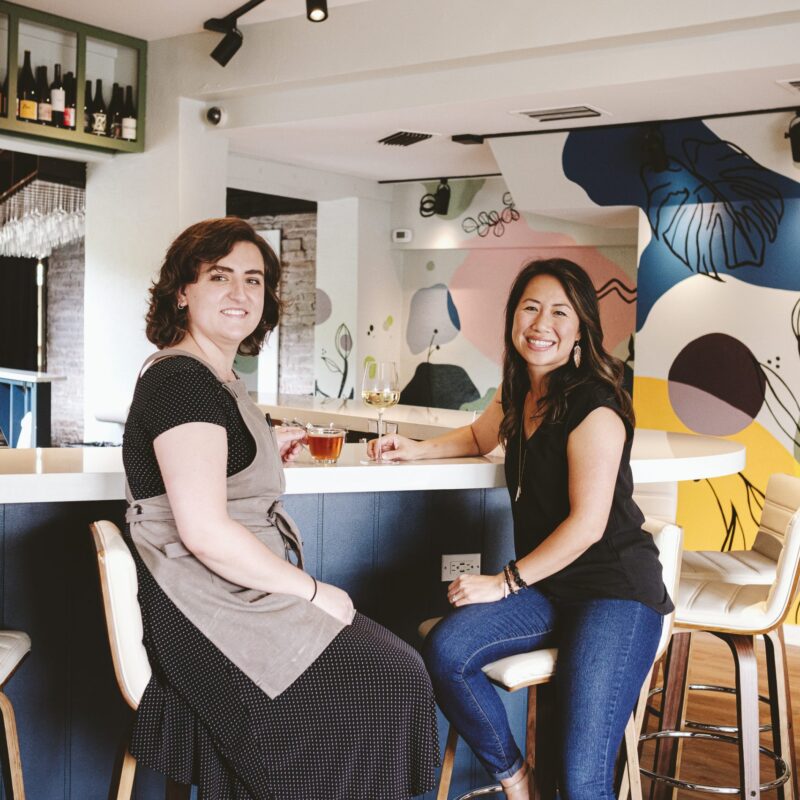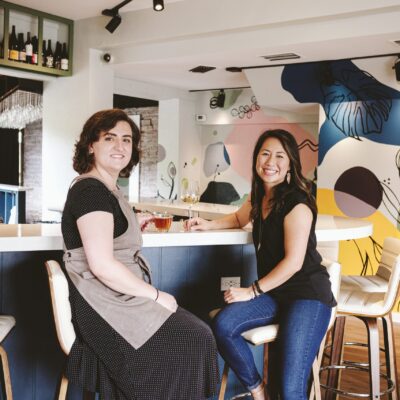Nine years ago, after working for 25 years at the Boston-based architecture firm he founded, Peter LaBau noticed he was no longer doing the same kind of work he’d set out to do. Rather than interfacing directly with clients and creating homes, he’d inadvertently shifted his focus to running the business. Although it taught him a great deal, he said, “I wanted to get back to what is most meaningful for me.” He took a cathartic motorcyle ride down the Blue Ridge Parkway and landed in Charlottesville, where he now keeps a small office to focus on the kinds of projects he likes—and to work directly with clients. “Great architecture inspires, nurtures, heals and instills a sense of pride that helps lift all of us. It’s fun to be a part of it here,” he said.
Why architecture?
It’s the synthesis of all kinds of things that are important to me—a strong desire for home and community, meaningful interaction with the planet and a need to express myself to name just a few, and it utilizes all of my abilities as a creative person and as an artist. I have to do something in my life that I feel makes a difference and that enhances people’s lives, and makes this world a better place. It’s constructive in every sense of the word.
What was your life like when you were a child and how did it lead you to design?
I’m the fifth generation of either architect or builder on my dad’s side of the family. As the oldest son of an architect, I grew up in my father’s office and on his jobsites. My mother was an artist and interior decorator, and so between the influences of my two parents (a.k.a. the “Taste Police”), I was steeped in the design world from childhood and appear to have been genetically pre-destined to stick with the family path. I was taught to draw and express myself visually early on, and that provided me the basic language to explore a number of visual mediums like painting, photography, printmaking, set design, furniture design and architecture.

Among Peter LaBau’s projects (from top to bottom) are a French-inspired residence on Afton Mountain, a large 1880s-era horse stable converted to a residence, an 1890 Colonial Revival in Boston, and a French-inspired master bedroom. Photo: Courtesy Peter LaBau
a large 1880s-era horse stable converted to a residence,
Tell us about your college studio experience. Was there a standout teacher who had a lasting impact on you?
I had a studio professor in school who taught me more memorable lessons than any other teacher I’ve ever had, and he did it first by ignoring me. I had a pretty high opinion of my artistic abilities when I got to college, and I expected to be fawned over by this teacher. In fact he barely acknowledged me for my first year with him. Students that had what I considered far less ability than I did got his praise and attention. At the beginning of year two, I noticed that he had taken one of my designs and incorporated it into some of his own work. I was stunned. When I approached him and asked why, he laughed and explained that the only way he could have gotten me to work so hard was to have ignored me. And it worked. From then on we were great friends. He’s the one who taught me (among many other things) to always work “from general to specific,” and that a design should express a sense of completeness from its earliest iterations and that it should develop evenly to its resolution. Simple stuff I suppose, but these and other of his lessons are the ones I always call to mind and that have never let me down.
On process: how does it begin?
For me it’s about digging down through the immediate things a client asks for when I begin a new project. Sometimes the motivation for what they seek is only the tip of a much deeper iceberg that I think of as the pea under the princess’ stack of mattresses. When I find that core pebble of essential pain that drives their desire for the new or renovated home, I can begin to work toward a meaningful solution. The better I am at discovering, understanding and solving the underlying issues, the more the project seems to design itself.
What inspires you?
I’m a noticer. I see all kinds of things that inspire me, because I look for them and listen for them. I love looking at all kinds of visual art, the natural beauty of the landscape, and especially buildings. I’m a musician as well as a designer, and there are sounds and combinations of sounds that trigger certain responses in me that provide clues to solving visual and spatial problems. I also have a really good library of art and architecture books that I am constantly perusing. As long as my eyes and mind are wide open, and I’m feeling and aware, I don’t have to wait long for the universe to dish up what I need.
How does the site or sense of place inform architecture for you?
It’s really difficult to make meaningful architecture that isn’t one with its site. It would be like selecting a wardrobe for a person you’ve never met and know nothing about. The best architecture respects and complements its site visually, emotionally and environmentally. Even the simplest settings will have something that guides my design process. If it’s not the land itself, then it’s the buildings and community that surround it. And often it’s a gut thing for me that I can’t explain well, like dowsers who find water with a forked stick. I get feelings that are like an internal pressure from buildings and settings that steer me. And when I’ve got the right solution, the design feels resolved, and that tension goes away. It’s like clearing a path in the woods. Sounds kind of “woo-woo” but that’s how it works for me.
What’s in the studio at the moment?
I try to keep a balance of new houses and the restoration and renovation of old ones in my mix. At the moment I have one new house in Greene County under construction, and another that has just finished in the mountains outside of Roanoke. I have a 1920s Arts and Crafts house on Canandaigua Lake in New York State and a mid-19th century farmhouse in Palmyra that are both undergoing restoration and renovation, and a 1980s lakeside house in Louisa County that I’m adding to and renovating. I’ve also got a fun project just over the Connecticut border from Dutchess County, New York that is a 1790s Georgian house. We’re renovating and restoring the main house, and creating an addition that is designed to appear to predate the original house by 50 years.
How would you assess the state of architecture in our region?
I don’t think the situation regarding architecture is too much different in our part of Virginia than it is from other areas of the country right now, although greater Charlottesville is so rich in natural beauty that buildings that don’t really shine tend to look even paler by comparison. And it’s sad to me, that where once houses, civic structures, commercial buildings and places of worship were such a source of pride for people, now quality architectural design is often seen as an unnecessary frill. An expensive, well-built structure that lacks design integrity is still a bad building in my opinion. Architecture is one of the measures of a community’s value, and when the quality of our built environment is allowed to diminish we’re all a lot poorer for it.









